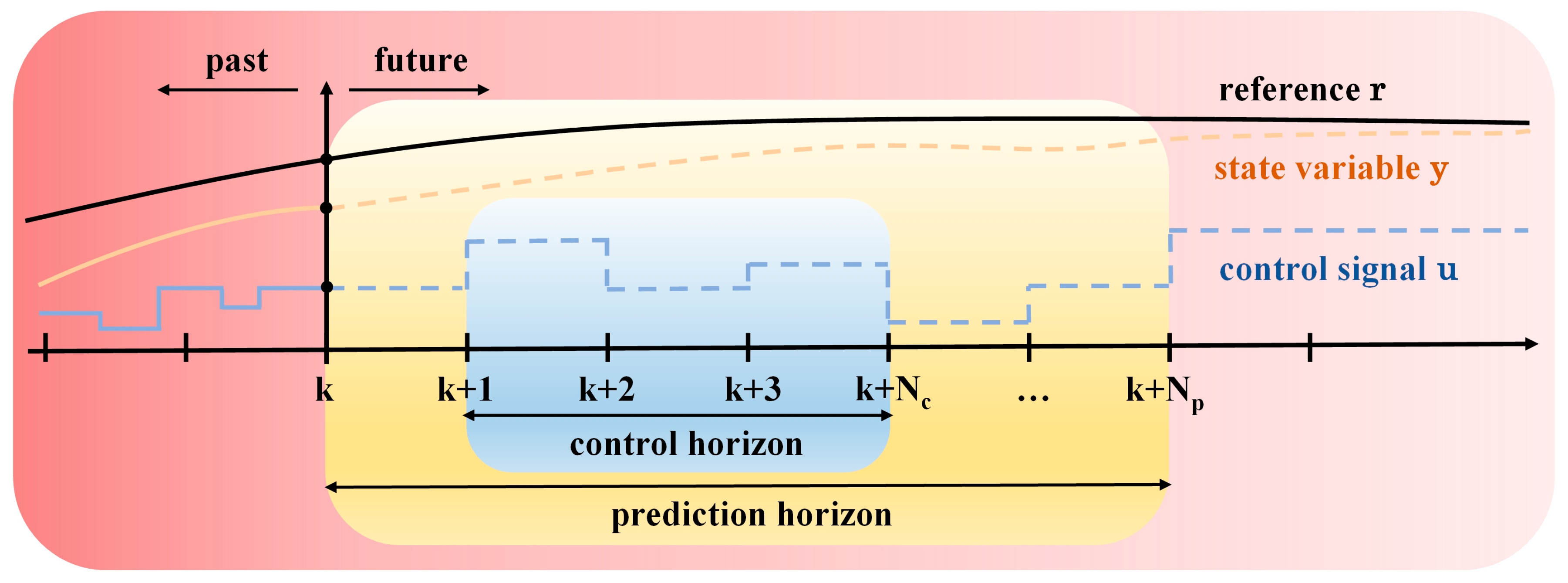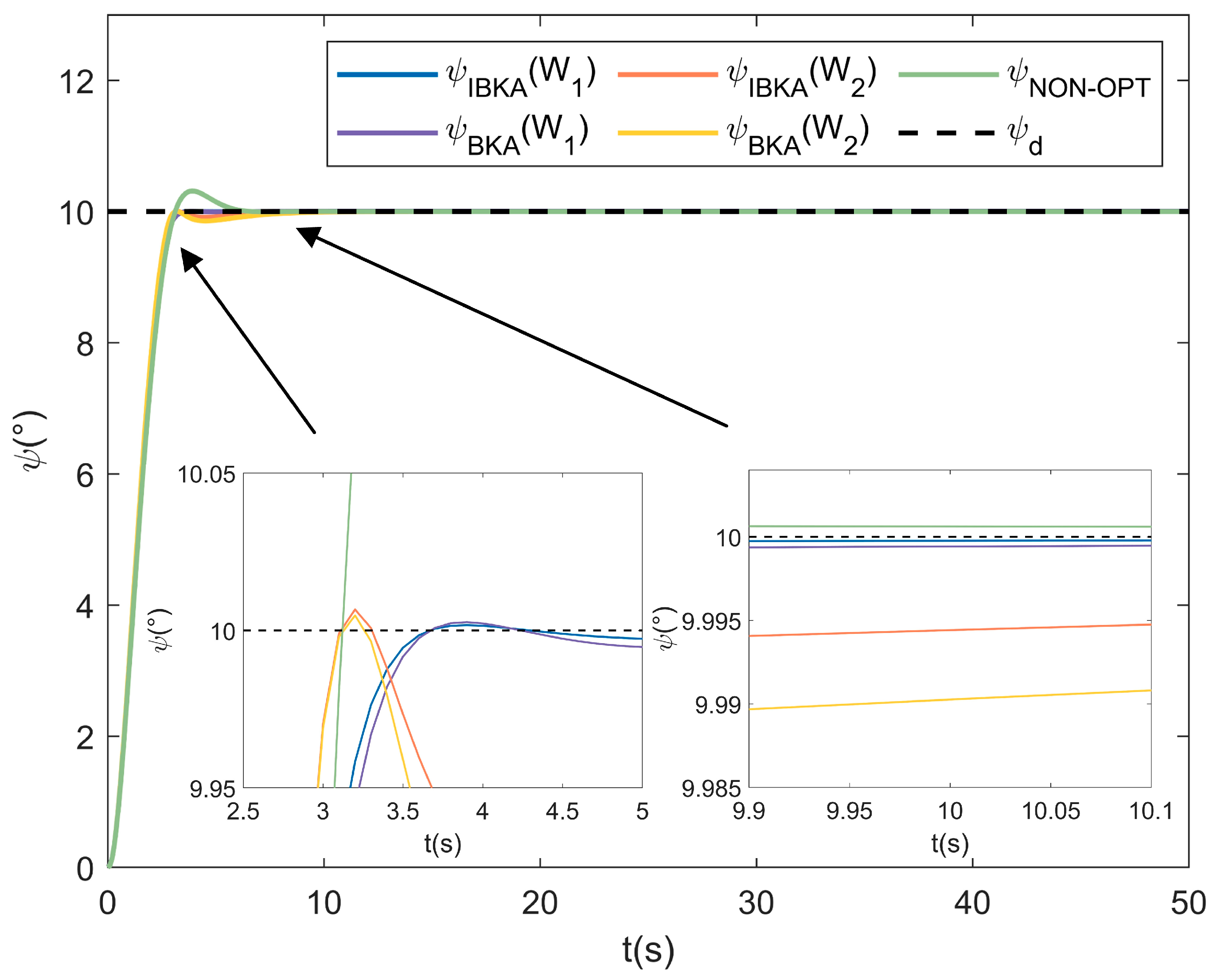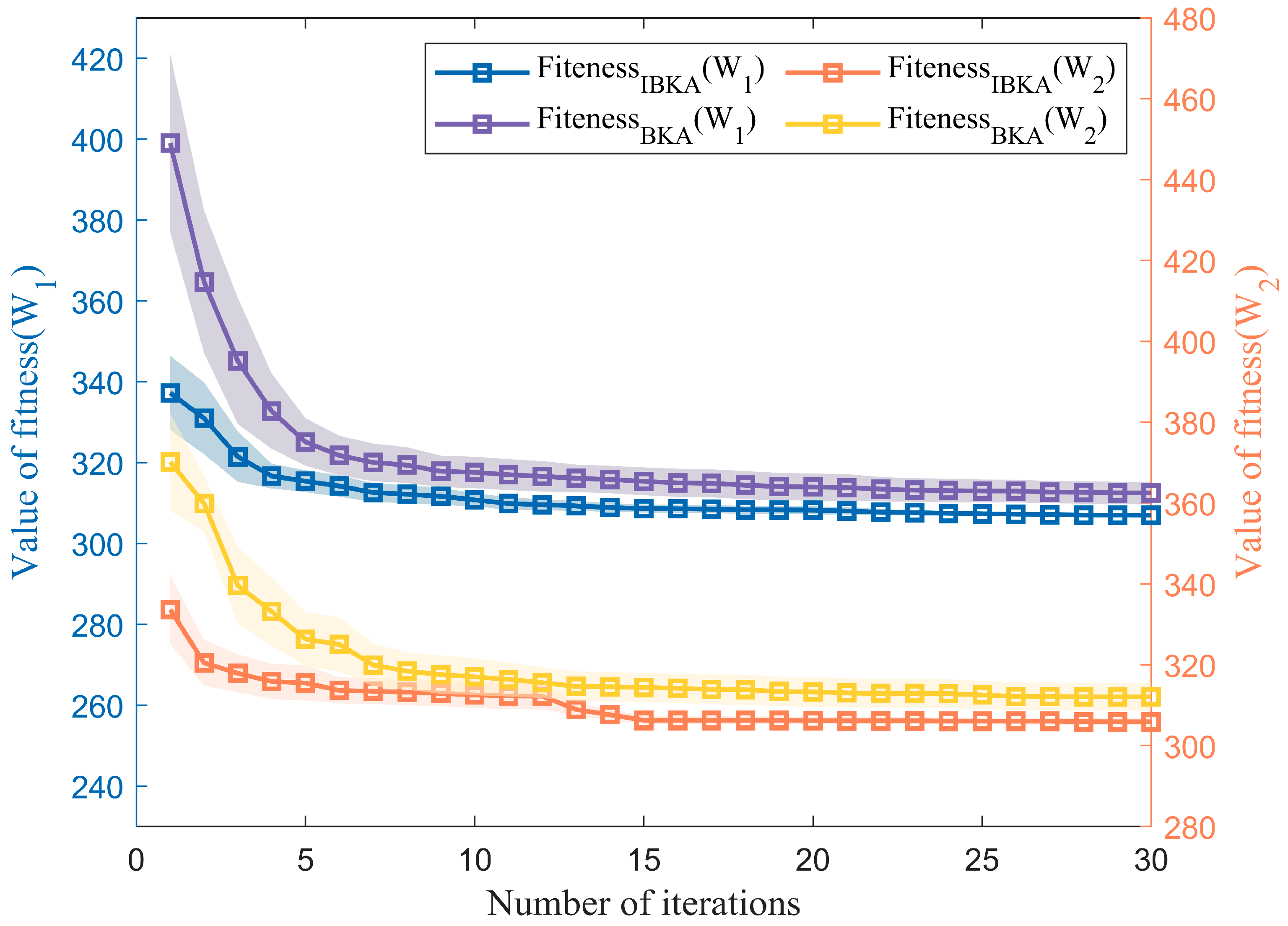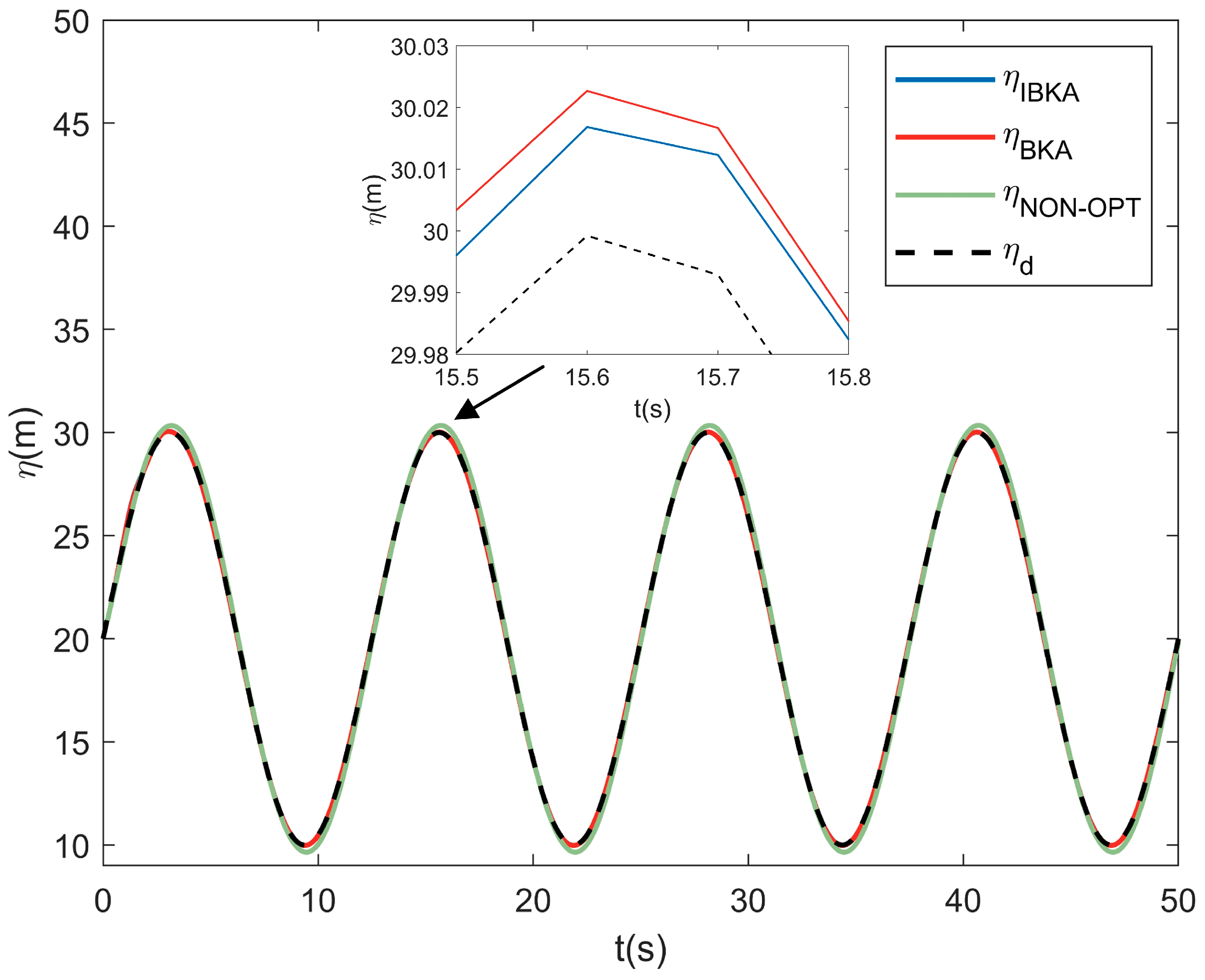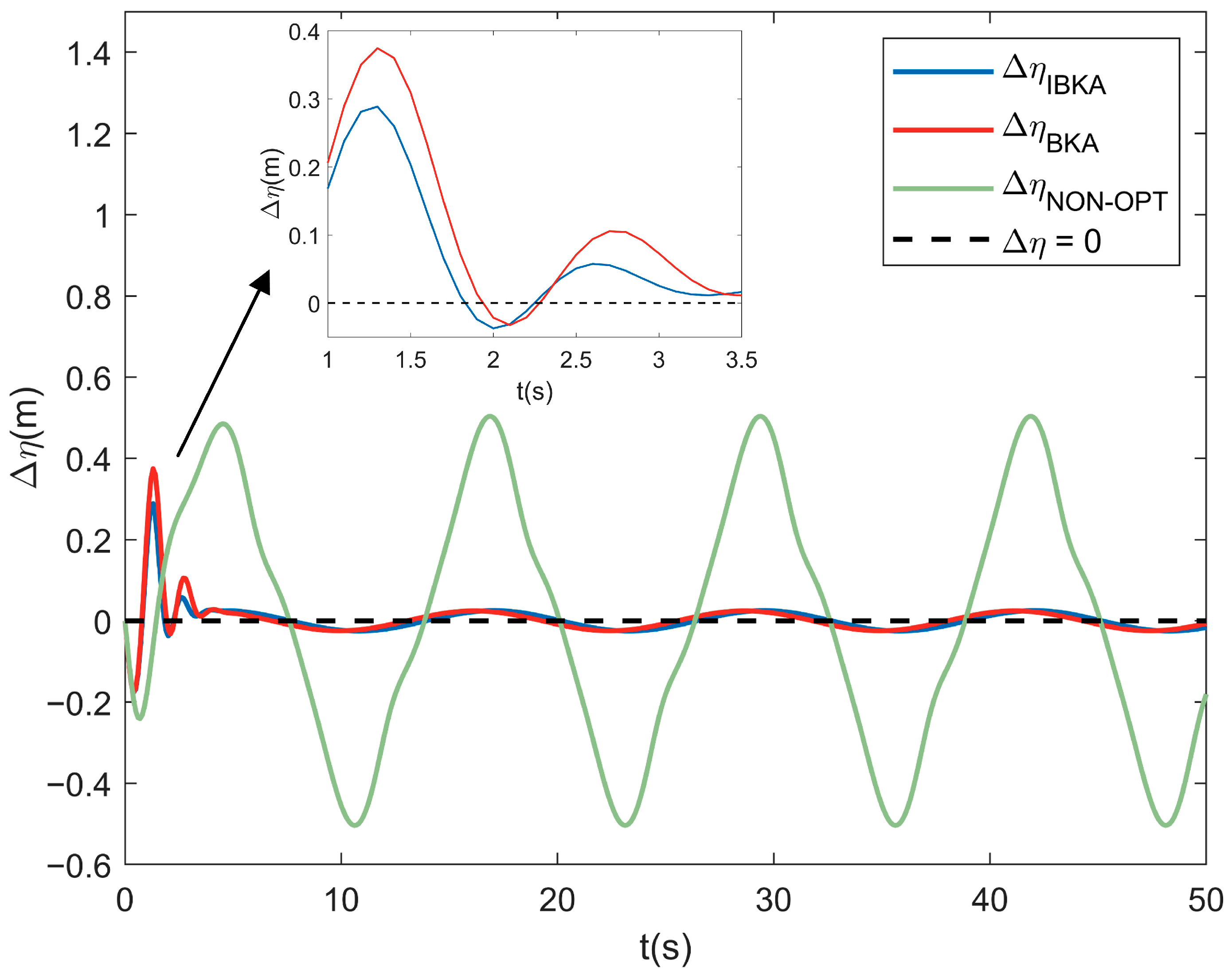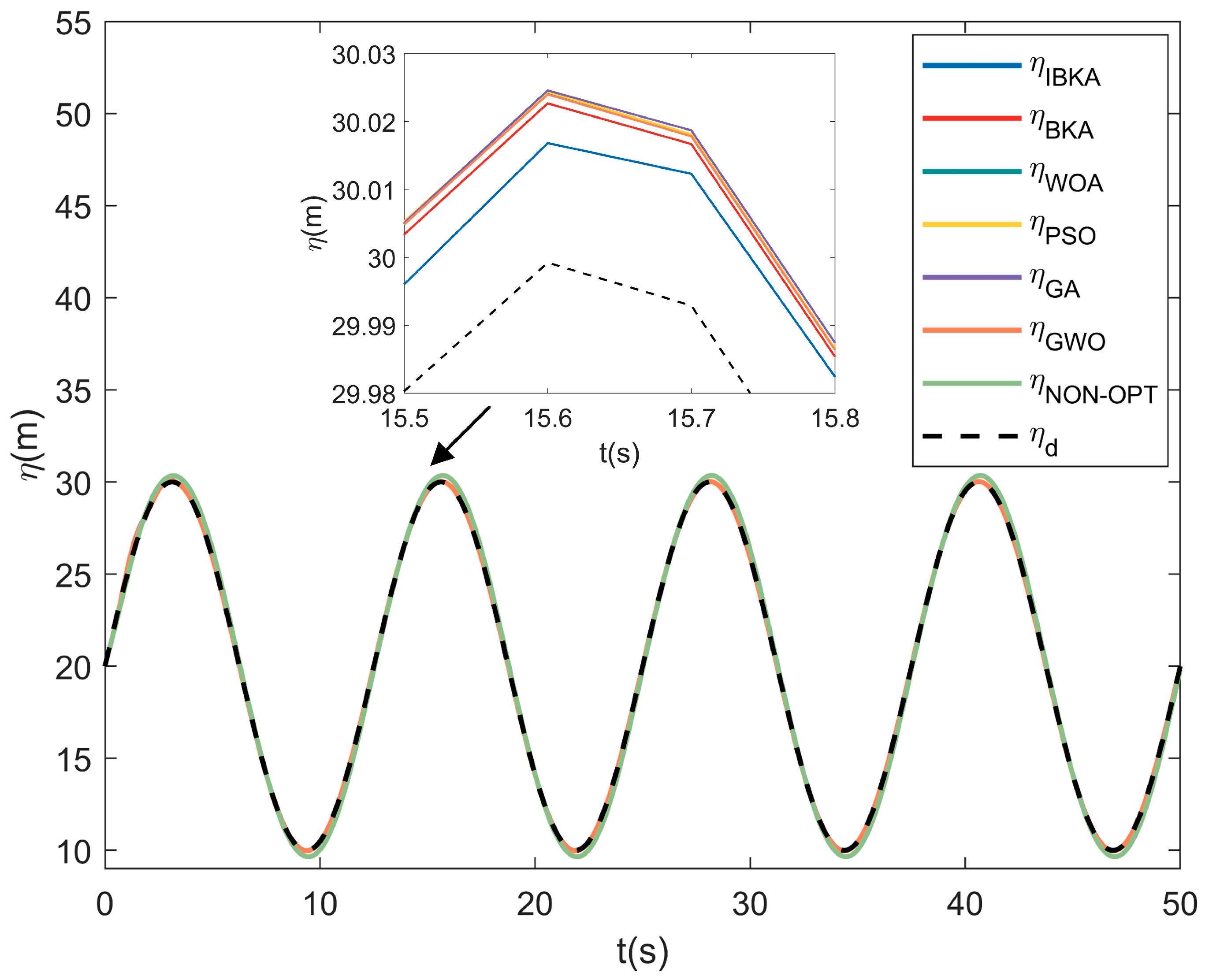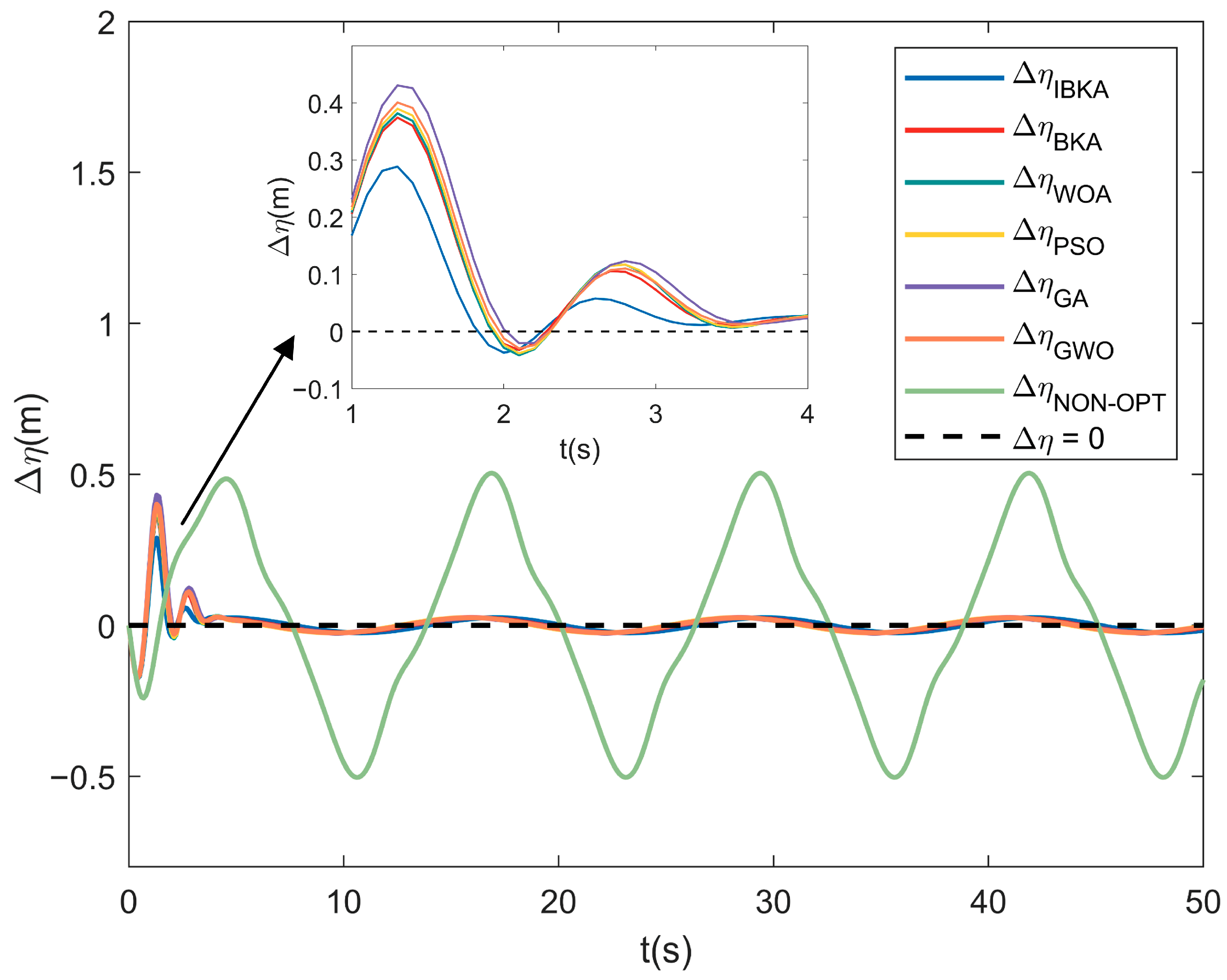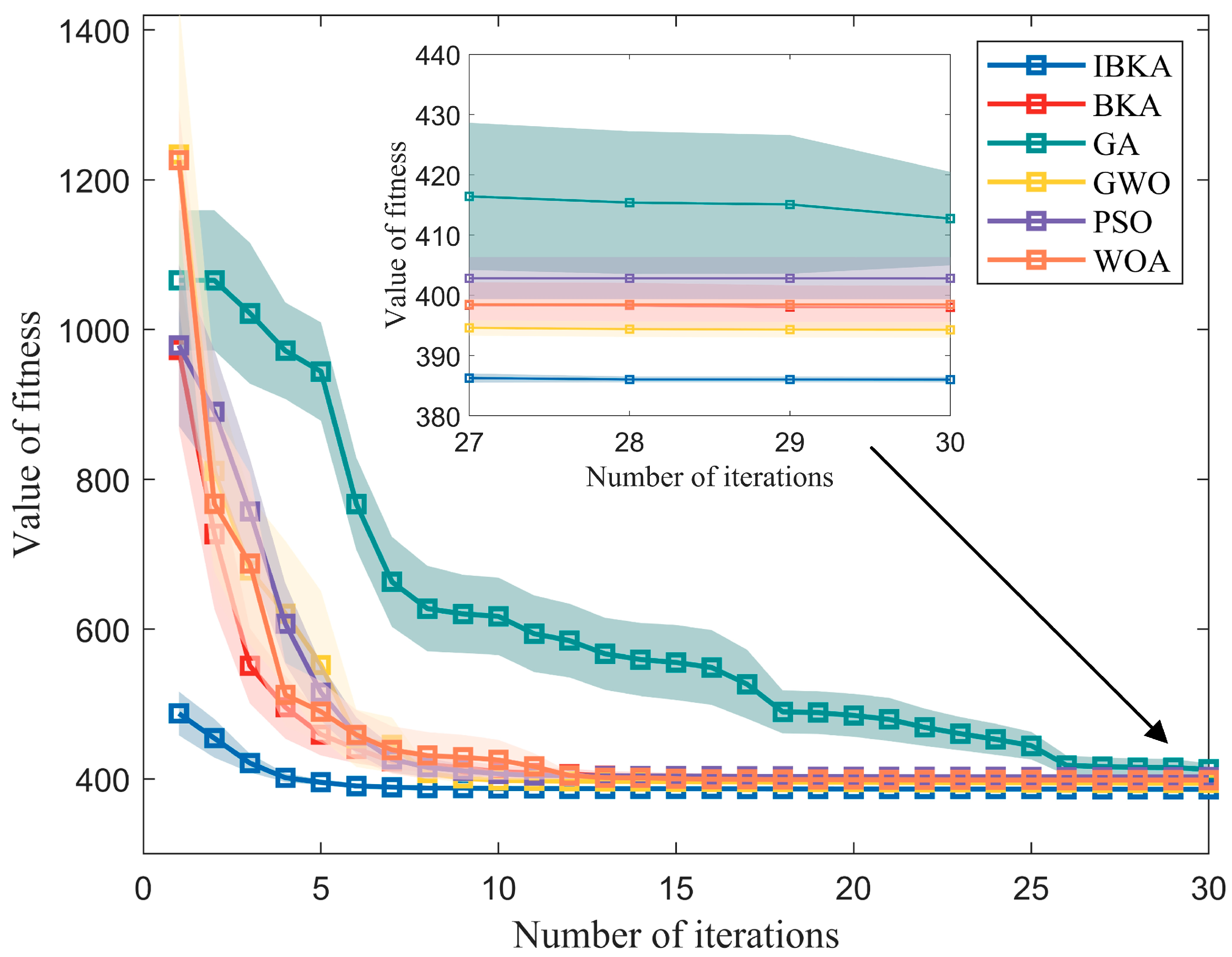Autonomous Underwater Vehicles (AUVs), as essential tools in fields such as marine resource exploration, environmental monitoring, and military reconnaissance, have their motion control performance directly determine the efficiency and reliability of mission execution. Both heading control and depth tracking are core aspects of AUV motion control. By adjusting the outputs of thrusters and rudders, an AUV can navigate steadily toward a predefined target. Considerable research efforts have recently been devoted by the academic community to the development and optimization of AUV motion controllers. These studies range from classical to modern control theory, with the objective of improving control accuracy and response speed.
Currently, common AUV motion controllers include technologies such as Proportional–Integral–Derivative (PID) control [
1,
2,
3], robust control [
4], Sliding Mode Control (SMC) [
5,
6], Linear Quadratic Regulator (LQR) [
7,
8,
9], and Model Predictive Control (MPC) [
10,
11]. As an advanced control method, MPC predicts the future behavior of a system by establishing a mathematical model. Leveraging this predictive capability, MPC determines the optimal control input by solving a constrained optimization problem. MPC finds extensive application across various engineering fields. It outperforms classical controllers in almost all these applications [
12], ranging from balancing walking robots [
13], suspending crane loads [
14], and cruise control for heavy-duty trucks [
15,
16], to controlling rotor speed and power in wind energy conversion systems [
17], to path tracking for AUVs [
18]. MPC offers significant advantages in robustness, accuracy, and convergence speed. Its robustness is ensured by explicitly accounting for system dynamics and operational constraints, which allows a reliable performance under model uncertainties and external disturbances. Accuracy is achieved through predictive optimization, where future system behavior is forecasted and control inputs are continuously adjusted to minimize tracking errors. In terms of convergence speed, MPC provides rapid and smooth responses by optimizing control actions over a prediction horizon, thereby facilitating fast trajectory tracking while maintaining system stability and constraint compliance. Extensive research and applications of MPC have been achieved in areas such as trajectory tracking, obstacle avoidance control, and path planning for AUVs. Isah A. Jimoh et al. [
19] investigate positioning control of AUVs for docking under varying tidal currents using a velocity form linear parameter varying MPC. By exploiting the interdependence of AUV kinematic and dynamic models, the method avoids increased state dimension and estimator use. Simulations show it improves transient response and reduces sensitivity to time-varying disturbances compared to prior controllers. Hong et al. [
20] proposed a controller combining state transformation MPC and SMC, which effectively improved the path tracking accuracy, enhanced tracking efficiency, and reduced optimization time for AUVs when performing underwater search tasks in complex marine disturbance environments. Hao et al. [
21] developed an improved tube-based MPC for AUVs subject to bounded external disturbances, addressing the issue of maintaining the disturbed system within a tube-shaped region centered on the reference state trajectory and achieving robust control of the AUV system. Wang et al. [
22] proposed an event-triggered MPC strategy for tracking and obstacle avoidance in multi-AUV formation systems with bounded disturbances, and designed an event-triggered control mechanism to reduce communication and computational burdens. Yao et al. [
23] presented an improved control method combining MPC and SMC, which achieves path tracking and obstacle avoidance while effectively reducing the mean square error and saturation rate of rudder angles. Isah A. Jimoh et al. [
24] investigates 3-D trajectory tracking and point stabilization of AUVs under ocean disturbances via velocity-form MPC, reformulating the model as an LPV system without augmentation. Simulations verify its effectiveness in offset-free control with low computation while ensuring stability. Yet, in practical applications, the performance of MPC controllers largely depends on parameter selection. Traditional parameter selection methods typically rely on experience or trial-and-error approaches, which often fail to ensure optimal control performance in complex environments. These methods are not only time-consuming but also require highly experienced experts. Additionally, when the controlled object changes, the weight parameters must be manually readjusted, thereby causing considerable inconvenience in engineering applications. Therefore, there is a pressing need to develop an MPC controller parameter optimization algorithm based on a heuristic function, and to construct a fitness function with adjustable coefficients to rapidly determine MPC controller parameters under varying control requirements.
In recent years, the academic community has conducted extensive research on parameter optimization for various controllers, employing common heuristic algorithms such as Genetic Algorithm (GA) [
25,
26,
27,
28], Particle Swarm Optimization (PSO) Algorithm [
29,
30,
31,
32,
33], Grey Wolf Optimization (GWO) Algorithm [
34,
35], and Ant Colony Optimization (ACO) [
36,
37] for optimizing parameter design in controllers such as PID and LQR. Specifically, parameter optimization for PID controllers primarily focuses on the proportional, integral, and derivative coefficients. Xiong et al. [
25] presented a fuzzy adaptive PID control method for AUVs aimed at achieving motion control. The improved GA was shown to effectively enhance path optimization quality by improving genetic operation mechanisms. It not only increased the convergence speed by 30% compared with traditional algorithms but also improved the smoothness index of planned paths by 25%, verifying the engineering applicability of the algorithm. Eltayeb et al. [
26] employed GA to optimize the gain parameters of fractional-order PID controllers and standard PID controllers for nonlinear robotic arm systems, significantly enhancing system robustness and tracking accuracy. The simulation results demonstrated a significant reduction in the root mean squared error of relevant variables during trajectory tracking. Liu et al. [
29] proposed an improved PSO algorithm, which was designed to reduce the occurrence of trapping in local optimal solutions by modifying the particle swarm inertia weight and was applied to PID adaptive parameterization. Arrieta et al. [
38] investigated the pitch–roll angle control problem in quadrotor unmanned aerial vehicle systems using a multi-objective optimization approach that comprehensively incorporated weighted cost functions in the form of the Integral of Absolute Error (IAE) and the Integral of Time-weighted Absolute Error (ITAE), as well as battery usage. Unlike PID controller optimization, parameter optimization for LQR controllers is primarily concerned with weight matrices
and
. Fan et al. [
27] proposed an improved quantum GA optimization method aimed at minimizing trajectory tracking error, which employed an improved quantum GA to jointly optimize the LQR state and control weight matrices
and
, thereby deriving the optimal control law. Zhang et al. [
30] introduced a PSO algorithm to optimize LQR controller parameters, which reduced the stabilization time of the two-dimensional ball-and-beam system and enhanced vibration frequency performance. Zhu et al. [
31] proposed an autonomous optimization control method based on an improved PSO algorithm for controlling the Flexible Linear Double Inverted Pendulum, thereby improving the system’s performance. He et al. [
33] proposed a Jumping Weight PSO algorithm, validated its optimization effectiveness using standard fitness functions, and applied it to the optimization of the weight coefficient matrices of the LQR controller, thereby effectively reducing horizontal vibrations in high-speed elevator cars. Xiong et al. [
35] developed an improved LQR control strategy based on the GWO; compared with passive suspensions, the proposed controller significantly reduced vehicle body acceleration, and its control effect was superior to that of the traditional LQR controller. Manna et al. [
36] proposed a new ACO algorithm for multi-objective weight optimization of the LQR in automotive active suspension systems. Yuvapriya et al. [
39] proposed an optimal LQR method employing the Bat Algorithm to determine the state and input penalty matrices. The conflicting control objectives of the active suspension system were formulated as a multi-constraint optimization problem. Zhang et al. [
40] introduced the differential evolution algorithm to optimize the weighted matrices of LQR. By adopting a real-number coding strategy for the weighted matrices
and
, the optimal weighted matrices and feedback matrix
were obtained, with significant improvements in the system’s settling time and overshoot. Ata et al. [
41] developed LQR controllers using four optimization algorithms to optimize the weighting matrices for tracking predefined three-dimensional trajectories. The optimization was limited to the weighting matrices
and
without a well-defined fitness function or a detailed analysis of the optimization process. Compared with PID and LQR controllers, MPC controllers are more complex because they require consideration of a larger set of parameters during the design process. Nevertheless, relatively few optimization methods for MPC parameter design have been reported in the literature. Ma et al. [
28] proposed a GA-MPC-based flexible power allocation system incorporating a hybrid ARIMA–LSTM predictor. Its main advantage lies in balancing ultracapacitor use and reducing battery throughput via real-time weight and constraint optimization, thereby improving efficiency and extending battery life. Li et al. [
32] proposed a trajectory tracking control method for unmanned vehicles based on PSO, where the ITAE of lateral deviation and yaw rate deviation was used as the objective function for iterative optimization. The maximum longitudinal error of the MPC controller after weight matrix parameter optimization was significantly reduced. Li et al. [
42] introduced a novel learning method based on the Butterfly Optimization Algorithm (BOA) to efficiently determine optimal MPC weights. Compared with LQR and pure pursuit strategies, the BOA-based method demonstrated superior control accuracy and stability. Nevertheless, the specific parameters optimized by BOA were not explicitly detailed in their study. Qiu et al. [
43] proposed an Adaptive PSO-MPC method for plunger lift optimization, which increased daily natural gas production by 18% while ensuring effective liquid drainage and safe plunger ascent speed. Sun et al. [
44] developed a two-step optimization method for freight train speed profiles: first optimizing the speed profile using a rolling optimization algorithm, then using the optimized profile as a reference curve for secondary optimization by the MPC controller. However, the study did not address optimization of MPC controller parameters, focusing instead on optimizing the curve itself. In summary, research on parameter optimization for PID and LQR controllers is relatively mature, whereas parameter optimization for the more complex MPC controller has received less attention. Moreover, existing studies are limited by unclear optimization mechanisms, resulting in ambiguities in optimized MPC controller parameters and incomplete formulations of fitness functions. Therefore, this paper will consider the motion mathematical model of the AUV as the controlled system and employ the novel intelligent optimization algorithm, the Black-winged Kite Algorithm (BKA), to propose a new approach for MPC controller parameter optimization. The main contributions of this research are as follows:
The remainder of this paper is organized as follows. The second part describes the mathematical model of AUV motion and the optimization mechanism of the BKA. The third part details the principles and methodology of MPC controller design using parameter optimization through IBKA. The fourth part, based on the IBKA-MPC controller, presents experiments on AUV heading control and depth tracking to validate the effectiveness of IBKA in optimizing MPC controller parameters. The fifth part provides the conclusions and outlines future research directions.

